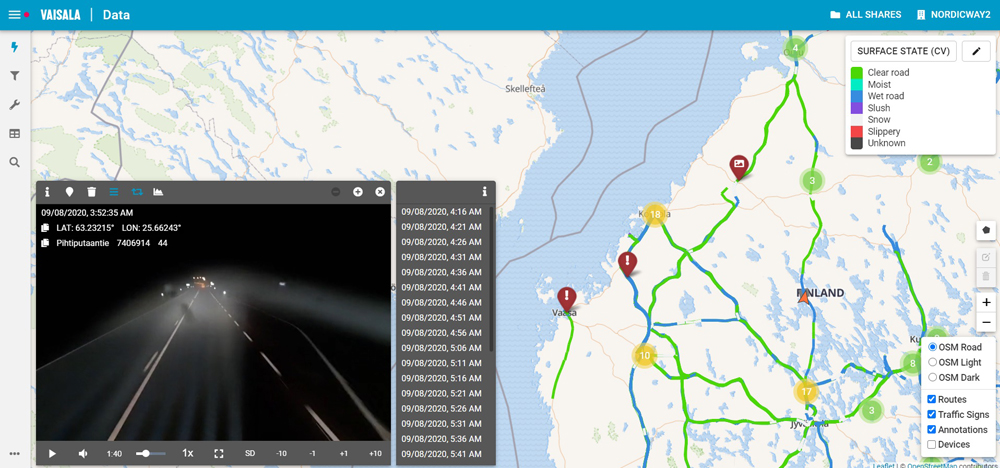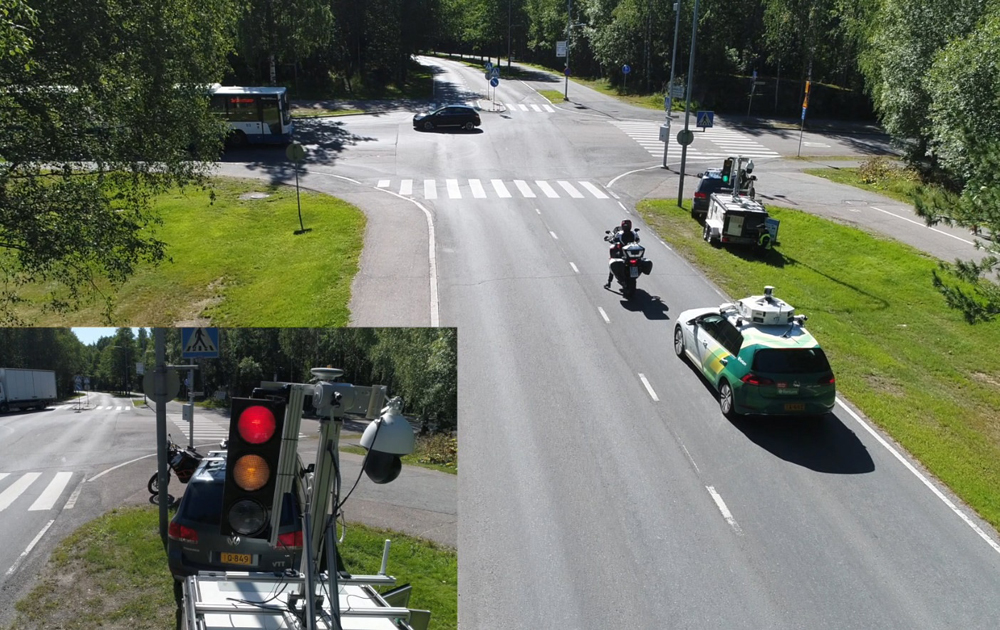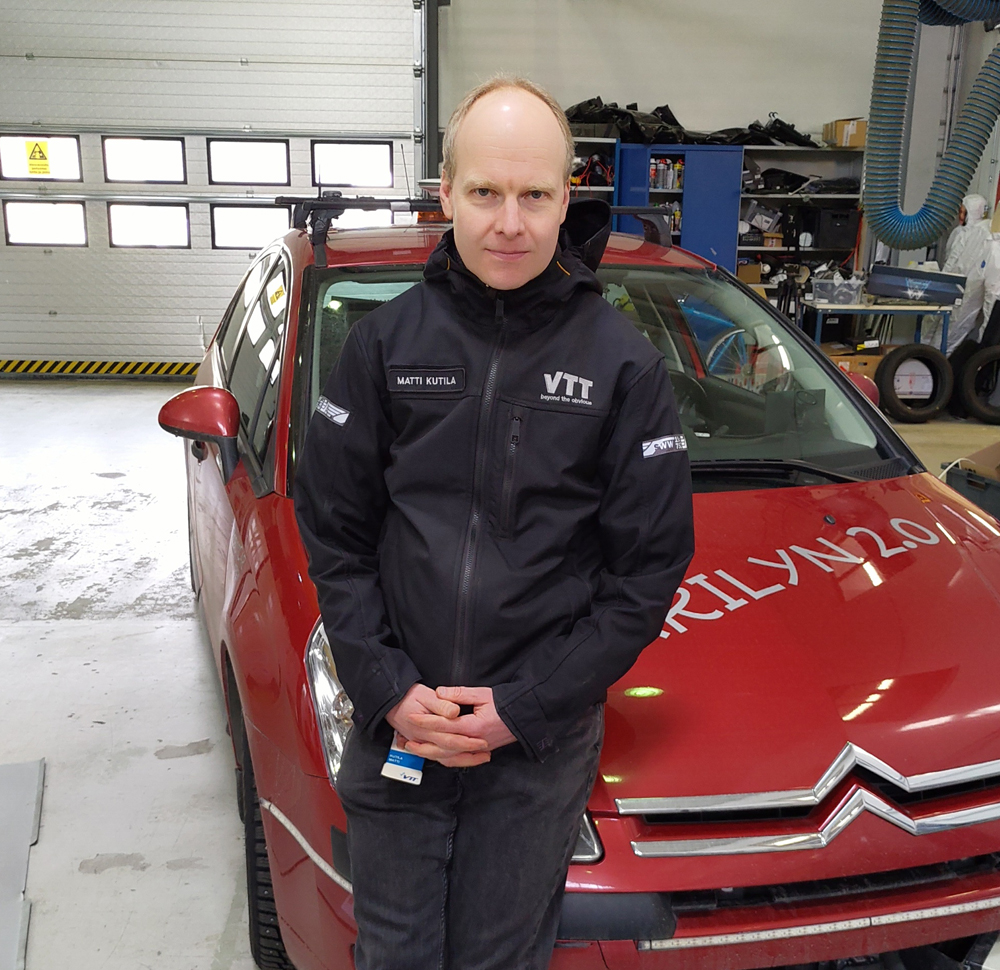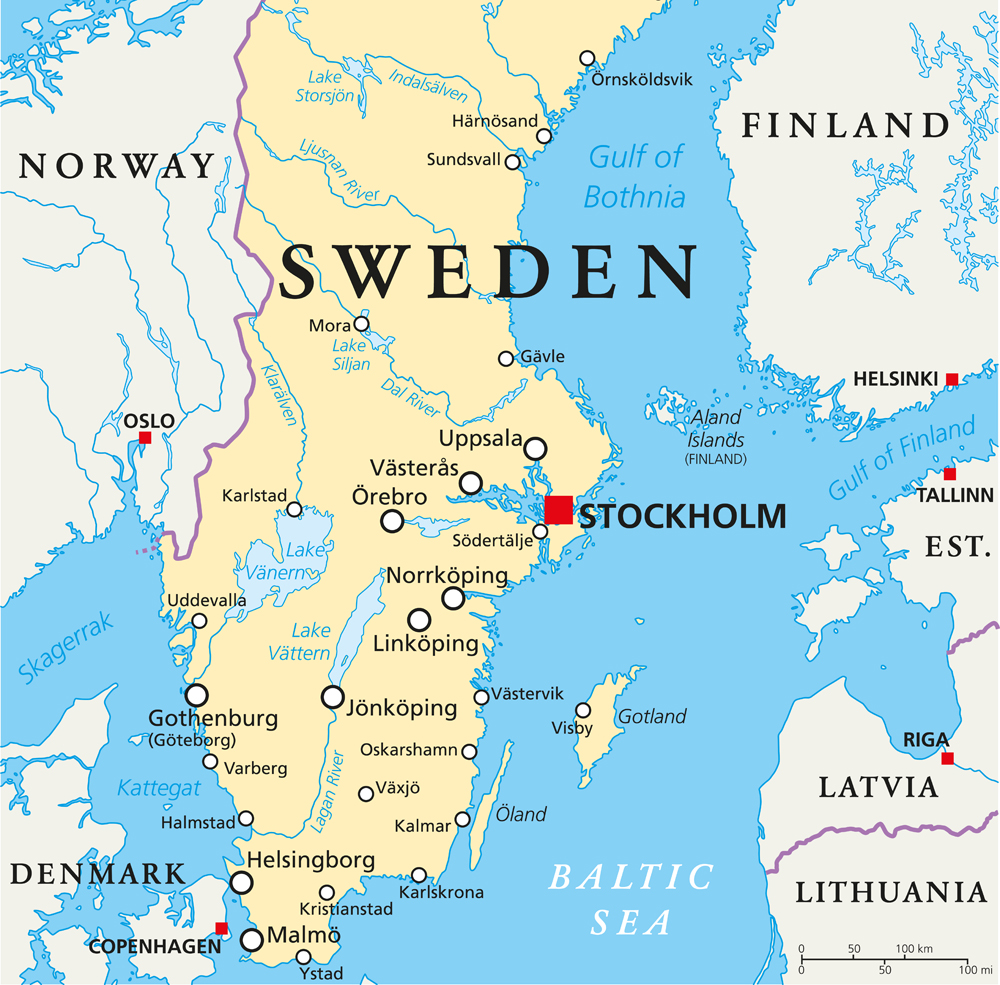
Despite the coronavirus pandemic and the stringent restrictions associated with it, the ITS sector of the Nordic states – Denmark, Norway, Finland and Sweden - is steadily developing. This is reflected by the constant upgrading and modernisation of local ITS infrastructure. Since the beginning of the 2000s the region has achieved major progress, significantly improving its traffic situation.
As well as a regular introduction of new ITS solutions and technologies, local analysts point to updated regulations and well-functioning public transport systems.
Denmark

Of the four countries of the region, perhaps the biggest progress in this field in recent years has been achieved by Denmark.
Charlotte Vithen, director, traffic management and traffic data at the Danish Road Directorate, told ITS International: “In recent years there has developed a new way for the Danish road authorities to manage, purchase and organise the whole area around traffic signals. The aim is to increase the functionalities based on open standards and interfaces, gain more control of the use and maintenance of traffic signals and, in the end, improve traffic flow in general.”
An example of this is the city of Aarhus, the second-largest in Denmark, on the east coast of the Jutland peninsula. According to Vithen, Aarhus “has some very interesting experience in this field”.
Michael Bloksgaard, a senior ITS coordinator for the Aarhus regional authorities, confirms this. “Over the last couple of years, the city of Aarhus has been working towards a traffic management central (TMC) strategy to manage traffic in a growing city. In order to do so, a strategic approach has been chosen where every part of the process is being evaluated in order to get a flexible and open solution that fits the TMC strategy. For traffic signals, this has resulted in a solution where tendering strategy and OCIT-protocol has been used to breakdown the usual silos between solutions from different suppliers and secured minimal dependencies on specific suppliers. The result is traffic signal programmes that can be adjusted as needed by the City of Aarhus or any other third party.”

According to Bloksgaard, after choosing OCIT (Open Communication Interface for Traffic) as the protocol for traffic signals in Aarhus, other Danish cities have followed by installing OCIT solutions - thereby having more flexible solutions for future management. Bloksgaard believes the next step is to secure a good central management solution for variable message signs (VMS) to create the same flexibility for VMS as for traffic signals: “One of the key goals is that most future VMS will be full graphic and not dedicated to one core functionality.”
Norway
In the meantime, neighbouring Norway’s ITS sector has traditionally been under the close control of local authorities.
Tore Becker, official spokesman for the country’s Ministry of Transport, told ITS International: “Norway is a promising country for the development of intelligent traffic system technologies, and has been ranked third for the second time in the KPMG autonomous vehicle readiness index.”
In order to improve the transport situation in the country four years ago, the state-owned enterprise ENTUR was established, Becker continues.
“It functions as the national data and travel planner, and supplier to the public transport industry,” he says. “Currently the enterprise gathers data on electric scooters in a cloud system. They are mandated to gather private capacity and position data, but are not organised to do that yet. Redistribution of data is intended to be free.”
According to Becker, Norwegian authorities are currently paying particular attention to the further development of the concept of self-driving buses/shuttles, which involves active introduction of bigger autonomous vehicles in different segments of the public transport network of the country.

Norway is using sensor technology for improving traffic safety and traffic surveillance monitoring – with due consideration for the General Data Protection Regulation (GDPR), he adds.
Becker suggests the country is now the world’s leading nation in terms of electric cars: more than 10% of all private cars in Norway are electric already, as are around 50% of all new cars sold in the country.
Finland
The picture is also interesting in Finland, with innovations shooting off in several directions. Matti Kutila, leader of the automated vehicles team at VTT, one of the country’s key ITS research institutes, explains: “In recent months there have been some serious developments especially in cellular 5G network and DSRC trials to understand their benefits for introducing automated vehicles.”
Trials have been carried out in the Tampere region with automated shuttle buses, focused on analysing the benefits of mobile edge computing for distributing intelligence. “Trial and development has been conducted to use lightpoles for implementing weather sensors, transport surveillance cameras, etc. which are connected via cloud services to the other road users,” Kutila says.

Investments have been made in major cities for electric vehicles, such as buses, to support low-carbon public transportation. Kutila believes the Finnish ITS sector is “pretty good in introducing new quick trials to the markets, like supporting the mobility demands of the people”.
Sweden
And so to Sweden, the largest country in the region. For Christer Karlsson, CEO at ITS Sweden, a state-affiliated enterprise responsible for the management of road traffic in Stockholm and other major cities, the development of ITS is at a very active phase.
“We see the digitalisation of the transport system as an integrated part of the development of the local society,” Karlsson begins. “We see a closer connection to the environment and energy sector, city planning (zones with only electric vehicles, charging stations etc). To succeed in establishing a sound transport system, cooperation with all parties is essential.”
Several national initiatives have been launched in recent years with this principle, such as Smart City Sweden and Closer - ITS Sweden - AI Sweden.
Drive Sweden, a strategic innovation programme, focuses on developing, testing and implementing efficient, connected and automated transport solutions.

According to Karlsson, particular attention is currently paid to projects such as electric roads, automated and connected vehicles, and common payment systems for public transport. Nearly a year ago, the idea for a national payment system for all public transport in Sweden was presented.
The development of ITS in Sweden currently comes under the Swedish National ITS Action Plan, which also regulates the introduction of bridge tolls (Motala and Sundsvall) - infrastructure charges helping to finance the bridges - and congestion taxes which are intended to improve traffic flow in Stockholm and the routes around Gothenburg, for environmental reasons.
Regional developments
In the meantime, the ever-growing demand for modern ITS solutions in the region creates conditions for active launches by some leading local companies such as Vaisala, the Finnish developer and manufacturer of products and services for environmental and industrial measurement.

Markus Melander, head of Vaisala’s department of business development, computer vision, says the company is currently involved in the implementation of a number of regional ITS projects, probably the most important of which is the NordicWay 2 project that spans Norway, Sweden, Finland and Denmark.
“It is one of the biggest ITS R&D exercises in the Nordic region,” explains Melander. “In this project, Vaisala’s RoadAI solution delivers a computer vision component, helping operators of postal vehicles and forest industry trucks send and receive proactive notifications about roadwork and other safety-related phenomena. This is an important step in improving situational awareness of connected vehicles and notifying drivers of any safety-related issues on the road network. This supports route planning and safe execution of the journeys.”
The development of ITS has a particular importance for the entire Nordic region, given its cold climate and the fact that winter weather can be much more severe in this location than in any part of Europe.
“It’s essential to understand how road weather measurement technologies and road state forecasts can, with the support of ITS, ensure safe and fluent traffic in snowy, icy and generally slippery conditions,” Melander explains. “This takes place through proactive winter maintenance and reactive traffic management actions like dynamic speed limits or warning signs or by sending information of road state to connected vehicles.”
Such activity points the way forward, Melander concludes: “From my perspective, the focus is now in providing information services to the automotive industry and across brands to ensure that ecosystem of AVs and connected vehicles are having the most accurate, real-time information available about road state and infrastructure-related hazards, such as road works.”











